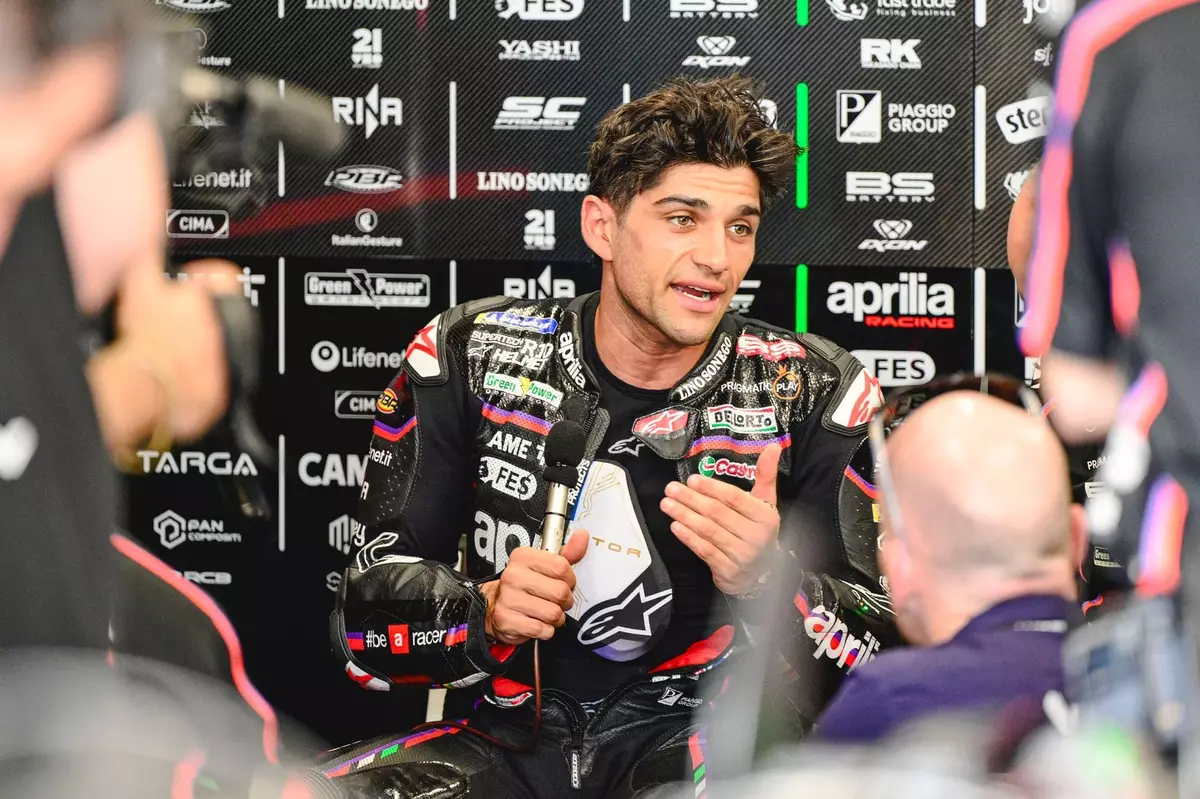In a surprising turn of events that has set the MotoGP paddock abuzz, Jorge Martin’s intention to terminate his contract with Aprilia by the conclusion of the 2025 season has sent shockwaves through the motorsport community. What seemed like a promising partnership is fast unraveling, leading observers to question not only the future of the rider but also the integrity of the Aprilia brand. The implications of this conflict extend well beyond the racetrack, begging an exploration into the complexities of contractual relationships in high-stakes sports like MotoGP.
Contractual Controversies and Legal Quagmire
As reported by Autosport, Martin’s actions hint at an underlying tumult within the ranks of Aprilia. The Spanish rider’s decision to invoke a clause that would allow him to walk away after just two seasons, contingent on his performance, paints a picture of distrust laced with ambition. Specifically, this clause allows Martin to escape his commitment if he isn’t ranking within the top three after only six races in the season. This stipulation, agreed upon by Aprilia’s CEO, Massimo Rivola, appears to be a double-edged sword that could ultimately inflict damage on both Martin’s credibility and Aprilia’s reputation.
However, the situation is complicated further by the injuries that Martin has incurred, leading to significant absences from races. Aprilia argues that because he has missed five out of six events due to injuries, the clause had been rendered ineffective. Meanwhile, Martin’s proposal for a six-race extension to the clause upon his return might be seen as an olive branch, yet it also raises eyebrows. Critics may argue that a contract which relies significantly on a rider’s performance leaves much to be desired, as it inherently suggests a volatility that could undermine the entire operation.
The Brand at a Crossroads
Aprilia finds itself at a precarious juncture, grappling with the fallout of Martin’s intentions amid a burgeoning injury crisis. The brand, once buoyed by hopes of a triumphant collaboration, is left vulnerable as the public narrative begins to sway towards skepticism. The silence from both Martin and Aprilia is alarming, hinting that conversations might be happening behind closed doors, yet the absence of substantive public discourse exacerbates the uncertainty swirling around them.
Given that Rivola had previously put substantial effort into courting Martin’s signature less than a year ago, this seeming abandonment creates an image of instability. Why would such a well-regarded name in motorsport find itself in a position where they may look to legal recourse rather than amicable resolution? The implications of this contract mishap could reverberate across the paddock, with other teams now reconsidering their strategies in securing talent.
Performance Pressure and Future Aspirations
Martin’s strategy of potentially leveraging his performance for contract leverage puts into perspective the pressure riders endure in elite motorsport. The stakes are immense; despite his untapped potential, the series of accidents leading to his current situation raises questions about his readiness to fulfil the ambitious objectives stipulated in the contract. Both parties have valid perspectives; Aprilia may question Martin’s dedication when results have largely eluded him while Martin may feel frustrated by being sidelined at a crucial point in his career.
Moreover, if Martin already has opportunities lined up beyond Aprilia, one must question the sincerity of his commitment going forward. How can Aprilia trust in the motives of a rider poised to leave the moment the winds turn unfavorably? The trust that should underpin sports partnerships is jeopardized; the tactical dance of maneuvering contractual clauses now takes on a much darker tone, potentially widening the rift that already exists.
Industry Implications and the Way Forward
As the saga unfolds, implications extend beyond just Martin and Aprilia; this conflict could recalibrate the approaches taken by other teams in how they deal with contract negotiations, performance-based clauses, and managing rising stars. The increasing complexity of modern contracts, particularly in high-stakes environments, may demand a reevaluation of norms within the sport.
Even as this issue presents numerous challenges, it may also serve as an opportunity for the MotoGP community to engage in introspection regarding the obligations and pressures that professional riders face. Addressing them could lead to more sustainable relationships within the sport, fostering an environment where talent thrives without the shadow of distrust.

